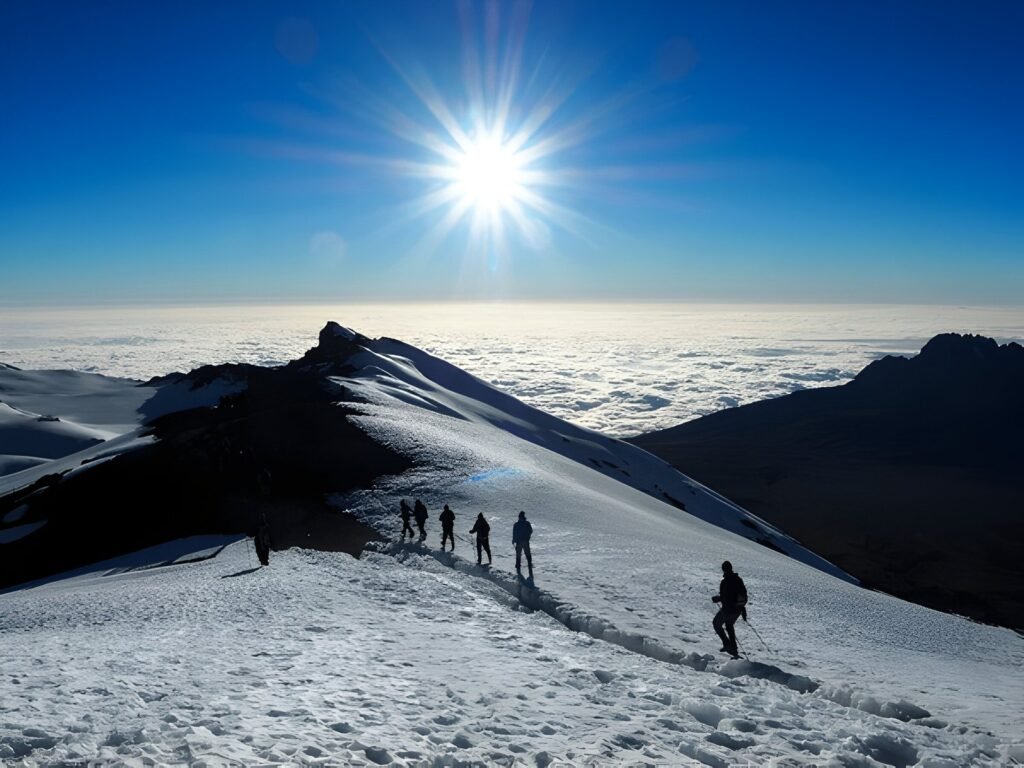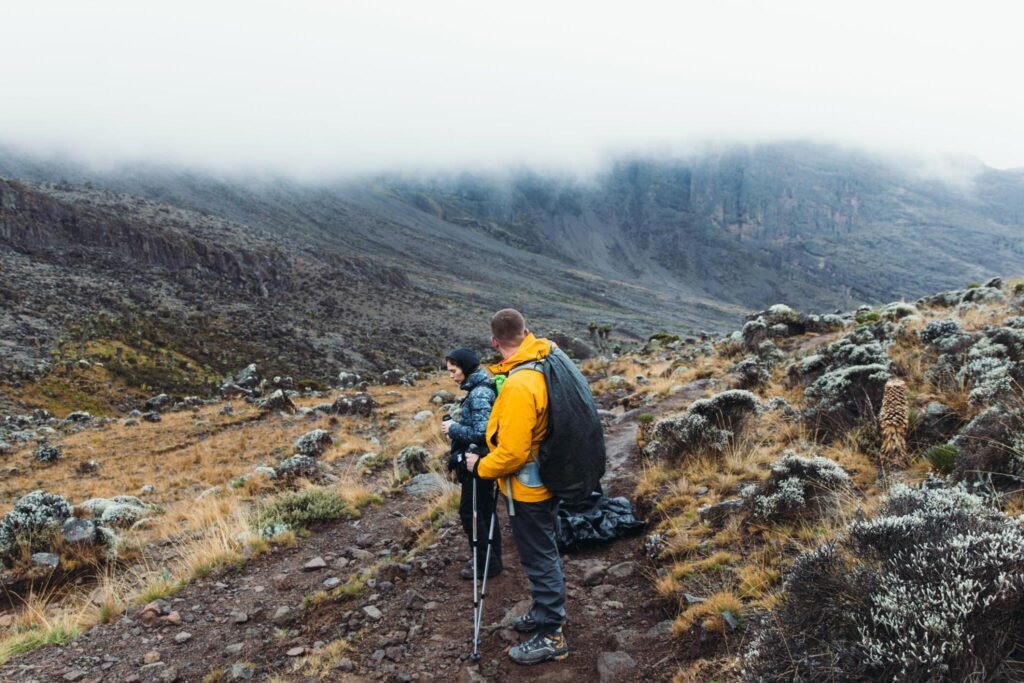Ultimate Guide to African Walking Safaris : An African walking safari is the ultimate immersive adventure, offering an intimate and authentic experience unlike any other. While traditional vehicle safaris are amazing, walking safaris take you deeper into Africa’s wilderness, allowing you to observe wildlife up close and connect with nature on foot. In this guide, we’ll explore the best destinations, what to expect, and why African walking safaris should be on your bucket list

Ultimate Guide to African Walking Safaris : Why Choose an African Walking Safari?
African walking safaris provide a unique and thrilling way to experience the bush. Here are some of the top reasons why walking safaris stand out:
1. Intimate Wildlife Encounters
Unlike traditional game drives, walking safaris bring you up close to the wildlife. Without the noise of a vehicle, you’ll have the opportunity to observe the smaller, intricate details of the bush—like tracks, scents, and sounds—while still encountering big game such as elephants, lions, and giraffes from a safe distance
Learn more about walking safaris with Kilimanjaro Climb Specialist
2. Connect With Nature on a Deeper Level
On foot, you become part of the landscape, moving quietly through the wild. Walking safaris give you a slower, more detailed perspective of the ecosystem, allowing you to truly connect with the environment.
Ultimate Guide to African Walking Safaris : Best African Destinations for Walking Safaris
Africa offers many incredible locations for walking safaris. Here are some of the best parks and reserves that provide the ultimate walking safari experience:
1. South Luangwa National Park, Zambia
Regarded as the birthplace of the walking safari, South Luangwa National Park is one of Africa’s most stunning wilderness areas. It’s renowned for its high concentration of wildlife and expert walking safari guides. Here, you’ll explore the bush alongside professional trackers and guides, offering safe and fascinating insights into the region’s ecosystem.
Plan your walking safari in South Luangwa with Eddy Tours Safaris
2. Serengeti National Park, Tanzania
The Serengeti is not only famous for the Great Migration but also offers exhilarating walking safaris. In the remote areas of the park, you’ll walk across open plains, exploring areas that are untouched by vehicles. It’s an incredible way to experience the Serengeti’s diverse wildlife and landscapes on foot.
Explore Serengeti walking safaris with The Wilderness Society
3. Mana Pools National Park, Zimbabwe
One of Africa’s hidden gems, Mana Pools National Park in Zimbabwe is a walking safari paradise. It’s one of the few places where visitors can roam freely on foot without the constraints of a vehicle. The park is known for its elephant, hippo, and predator sightings, making it a thrilling destination for adventurous couples and nature lovers.
Find walking safari details in Mana Pools at African Wildlife Foundation
Ultimate Guide to African Walking Safaris : What to Expect on an African Walking Safari
1. Expert Guides and Safety
Safety is the top priority on a walking safari. You’ll be led by experienced guides and rangers who are knowledgeable about wildlife behavior and the environment. These guides are trained to keep you safe while giving you an enriching experience, showing you animal tracks, plants, and hidden aspects of the ecosystem.
2. Up-Close Wildlife Viewing
Though you won’t get as close to big predators as you would in a vehicle, walking safaris allow for intimate encounters with animals like giraffes, zebras, antelope, and more. Guides often use their skills to get you within a safe viewing distance of larger animals like elephants and buffalo, adding to the thrill.
Ultimate Guide to African Walking Safaris : The Best Time to Go on an African Walking Safari
The dry season, which typically runs from June to October, is the best time for a walking safari in most African destinations. During this time, the vegetation is thinner, and animals gather around water sources, making them easier to spot. The cooler weather also makes walking more comfortable.
Discover seasonal safari tips at African Geographic
Ultimate Guide to African Walking Safaris : Essential Gear for Walking Safaris
Packing the right gear is essential for a comfortable and successful walking safari. Here’s a list of must-have items:
1. Comfortable, Sturdy Hiking Boots
Your footwear is crucial, as you’ll be walking long distances on uneven terrain. Make sure your boots are well-worn to prevent blisters and provide good ankle support.
2. Neutral-Colored Clothing
Wear lightweight, breathable clothing in neutral colors like khaki or olive green. This helps you blend in with the environment and avoid attracting the attention of wildlife.
3. Sun Protection
Africa’s sun can be intense, so pack a wide-brimmed hat, sunscreen, and sunglasses. Staying hydrated is also key, so bring a water bottle with you.
4. Binoculars and Camera
While walking safaris bring you closer to wildlife, having binoculars allows you to spot animals from a distance. A camera is also essential for capturing memorable moments.
Check out a complete packing list at Safari Bookings
Ultimate Guide to African Walking Safaris : Benefits of Walking Safaris for the Environment
Walking safaris have a lower environmental impact than vehicle safaris. By walking, you reduce the wear and tear on the land, helping to preserve the natural habitat for wildlife. Additionally, walking safaris support eco-friendly tourism initiatives that promote conservation.
Learn about eco-friendly safaris at World Wildlife Fund

Walking Safaris for Beginners: What You Need to Know
If you’re new to walking safaris, don’t worry! They’re suitable for most fitness levels, and your guide will set the pace. Before heading out, your guide will provide safety briefings and tips on what to expect, ensuring you’re well-prepared for the adventure.
Get walking safari tips at Footprint Adventures
Ultimate Guide to African Walking Safaris : FAQs
1. Are walking safaris safe?
Yes, walking safaris are safe when led by experienced guides. They ensure that you maintain a safe distance from wildlife while still enjoying the adventure.
2. How long do walking safaris last?
Walking safaris can range from a few hours to multi-day treks, depending on the destination and the experience you’re seeking.
3. Can you see the Big Five on a walking safari?
While it’s possible to see members of the Big Five on foot, walking safaris focus more on the smaller details of the environment. However, many areas offer close sightings of elephants, buffalo, and lions from a safe distance.
4. What’s the best time of year for a walking safari?
The dry season, typically from June to October, is ideal for walking safaris in most African destinations due to better visibility and cooler temperatures.
Ultimate Guide to African Walking Safaris : Ready to Explore on an African Walking Safari?
Walking safaris offer an intimate and immersive way to explore Africa’s wilderness. Whether you’re trekking through the remote landscapes of Zambia’s South Luangwa or observing wildlife up close in Zimbabwe’s Mana Pools, the experience is unlike any other.
Start planning your walking safari with Kilimanjaro Climb Specialist
Book your walking adventure with Eddy Tours Safaris

